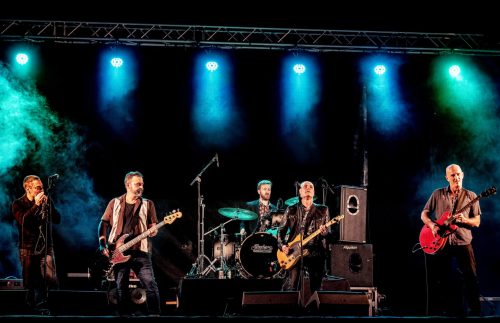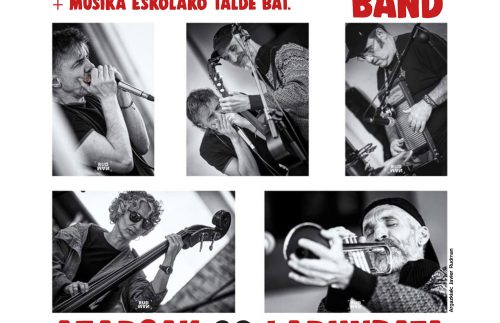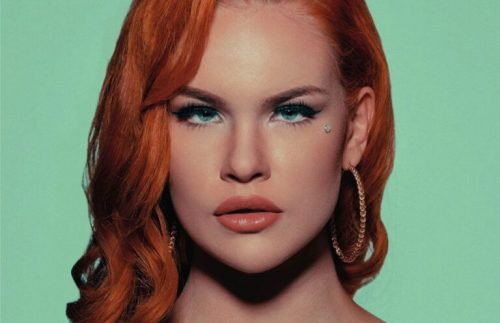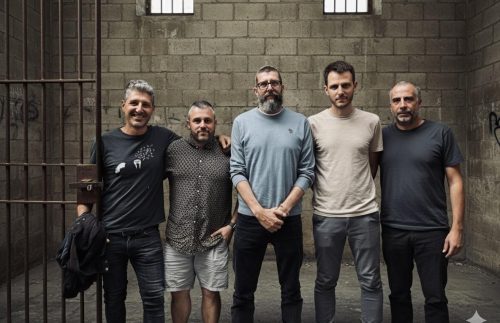
Folk vintage
There are no tricks or gimmicks in Xabier Badiola’s elegant photographs published so far. Whether proudly holding up his acoustic guitar, or melancholic and lonely strolling through the ruins of an abandoned factory, always in an elegant black and white vintage folk style. That is exactly what we can find in the beautiful melodies and grooves from this great record. Just Xabier’s voice and guitar, with some light and fleeting notes from Regina Luisa Zigaran’s voice. It is enough to complete an album that is probably one of the most impressive that this label has released in recent years. Xabier’s music is just like that, it conquers us, makes us use terms that we only reserve for masterpieces.
The LP’s cover features an enchanting drawing by veteran Eibar artist Iñaki Larrañaga, suggesting the album’s dialogue between different periods and generations. Quoting artists from the British folk revival era such as Pentangle, Fairport Convention, Nick Drake, Tim Buckley from the United States, Robbie Basho, John Fahey or Xabier Lete or Laboa from the new Basque song of the 60s is a usual source for an artist who plays whispered and slightly psychedelic melodies with just one guitar But there are very few (if any) cases where they really produce a minimal spark that recalls the brilliance of that type of musical giant. However, as soon as we listen to the first notes of this album, that magic, that trance-like state that we thought we had already forgotten and that was impossible to reproduce, comes back for a moment. The fragile tones reveal an identification that goes far beyond the simple imitation of a certain sound or aesthetic.
Until now, Xabier has played in electric English psychedelic and progressive rock-oriented bands, developing, and keeping his acoustic folk side in secret. As in many other cases, it was the pandemic break that made him dive into this world and write his first songs. It was also the moment when he made the conscious and sincere decision, in accordance with the intimate content of his lyrics, to sing in his native Basque language.
Far from sophisticated studio arrangements, Xabier Badiola recorded these 10 songs in a home environment, with great care. The greatest and most beautiful songs are often the ones that are best enjoyed and appreciated in their purest simplicity, without any accompaniment at all. And whether this is a temporary and unique initiative or a long-term project, there is no doubt that one of the most fascinating treasures to be heard today and here in the Basque Country music scene has just fallen into our hands.

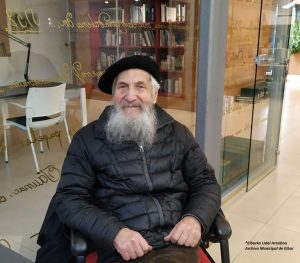
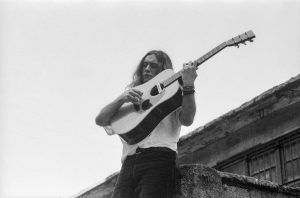
Iñaki Larrañaga
Founder of the Gorutz group. Painter, sculptor and poet of the everyday and the transcendent. Shipwrecked in life. Minimalist in his strokes and a faithful believer in inspiration.
Iñaki Larrañaga Iglesias was born in Eibar the same year that the city proclaimed the Second Republic. As a very young child, and due to circumstances of the war, he moved to Elgoibar where he spent a large part of his life and where he has good friends and fond memories.
At the age of thirteen he went to study commercial appraisal at the Marist Brothers’ school in San Martín de Oronoz, where he spent five long and spartan years of boarding. After completing his training he joined the staff of the Alfa company, where he spent the next three decades.
Master of his untamed future, he began to paint when he realized that “art is a game without laws.” His first solo exhibition was held in the hall of the then Sociedad Cultural Recreativa Arrate. Ten more followed: Donostia, Estella, Cuenca, Oñate, Bergara, Getaria, Tarazona, Zarautz, Eibar and Deba.
Iñaki Larrañaga was one of the founders, along with Fernando Beorlegi, Daniel Txopitea and Marino Plaza, of the Gorutz Group; a group that emerged with the aim of investigating new forms of expression and support between artists. The first exhibition opened on February 9, 1974, at the Caja Laboral in Eibar. Later, there were those in Elgoibar, Gernika, Irun, Donostia, Vitoria and Pamplona.
In love with the landscape and the people who surround him, Iñaki is a vital man whose workshop has produced thousands of faces, looks and portraits of no one with a stroke that, in the words of the author himself, appears “through carelessness, without premeditation.”
